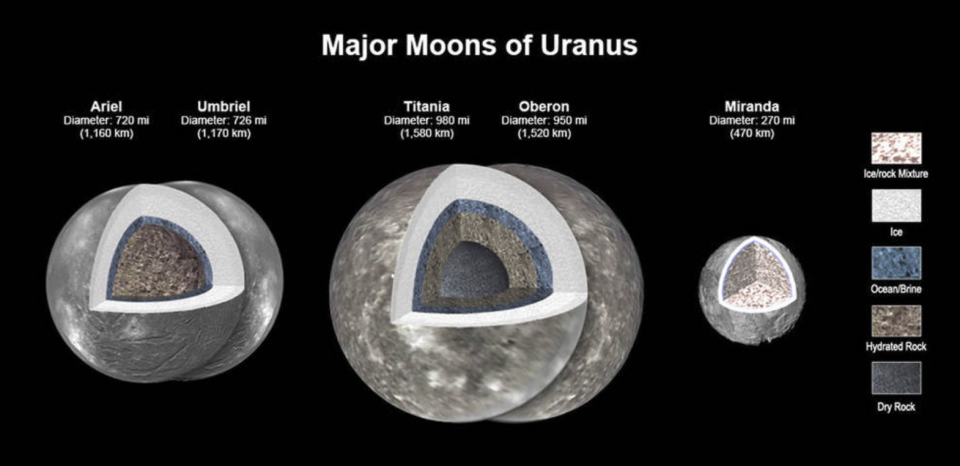NASA study: Oceans likely orbiting Uranus
Is water swirling around Uranus?
While our inner 12-year-old might immediately make a bidet reference, NASA scientists reviewing decades-old data believe they’ve determined the existence of water on four moons orbiting the ice giant.
And not just water, but oceans.
According to a NASA press release, re-analysis of data from NASA’s Voyager spacecraft, along with new computer modeling, has led NASA scientists to conclude that four of Uranus’ largest moons likely contain an ocean layer between their cores and icy crusts. Their study is the first to detail the evolution of the interior makeup and structure of all five large moons: Ariel, Umbriel, Titania, Oberon, and Miranda.
Similar to what scientists believe to be found on Jupiter's moon, Europa, the work suggests four of the moons hold oceans that could be dozens of miles deep.
Read more: NASA scientists add years to Voyager 2 power supply
321 Launch: Space news you may have missed over the past week (May 9)

Four of Uranus' moons similar to Jupiter's Europa
Scientists believer there are ocean layers sandwiched between a warm interior core and an icy crust on at least four of Uranus’ 27 known moons. This same pattern of icy crust and core is also believed to be present on Jupiter's moon, Europa.
Uranus data came from more than Voyager 2
The study revisited findings from NASA’s Voyager 2 flybys of Uranus in the 1980s and from ground-based observations. The authors built computer models infused with additional findings from NASA’s Galileo, Cassini, Dawn, and New Horizons (each of which discovered ocean worlds), including insights into the chemistry and the geology of Saturn’s moon Enceladus, Pluto and its moon Charon, and Ceres – all icy bodies around the same size as the Uranian moons.
Should we explore Uranus?
The National Academies’ 2023 Planetary Science and Astrobiology Decadal Survey prioritized exploring Uranus. In preparation for such a mission, planetary scientists are focusing on the ice giant to bolster their knowledge about the mysterious Uranus system. Published in the Journal of Geophysical Research, the new work could inform how a future mission might investigate the moons.
Rob Landers is a veteran multimedia journalist for the USA Today Network of Florida. Contact Landers at 321-242-3627 or rlanders@gannett.com. Instagram: @ByRobLanders Youtube: @florida_today
Support local journalism. Subscribe today.
This article originally appeared on Florida Today: NASA: Moons of Uranus may hold oceans under icy crust

